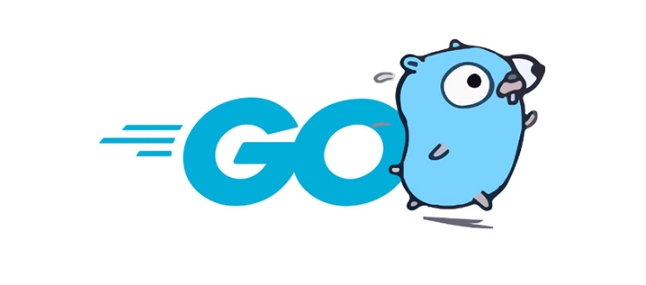What are some best practices for logging in Go?
Using structured logging, adding context, controlling log levels, avoiding logging sensitive data, using consistent field names, correctly logging errors, taking into account performance, centrally monitoring logs and unifying configurations are best practices in Go to achieve efficient logging. First, structured logs in JSON format (such as using uber-go/zap or rs/zerolog) are convenient for machine analysis and integration of ELK, Datadog and other tools; second, log traceability is enhanced by requesting context information such as ID and user ID, and can be injected through context.Context or HTTP middleware; third, use Debug, Info, Warn, Error levels reasonably, and dynamically control them through environment variables; fourth, record sensitive information such as passwords and API keys, and desensitization of inputs is strictly prohibited; fifth, unified field naming is such as "user_id", "req_id", "method", etc. to improve query efficiency; Sixth, when recording errors, you should include context and zap.Error(err) to capture stack information, rather than just outputting err.Error(); Seventh, you should give priority to using high-performance library zap to avoid executing string splicing or function calls in hot paths; Eighth, in production environment, logs should be concentrated on CloudWatch, Splunk and other systems, set up alarms and integrate observability pipelines; Ninth, initialization loggers should be completed in main function, and passed through dependency injection to avoid the arbitrary use of global variables and log.Printf. In summary, good Go logs should take into account structure, context integrity, security and performance to ensure that logs have long-term value to both current developers and future maintenance teams.

Logging in Go doesn't have to be complicated, but doing it right helps with debugging, monitoring, and maintaining applications in production. While Go's built-in log package works for basics, real-world applications benefit from more structured and flexible approaches. Here are some best practices:

✅ Use Structured Logging
Plain text logs are hard to parse and search at scale. Instead, use structured logging (typically JSON format) so logs can be easily ingested by tools like ELK, Datadog, or Loki.
Popular libraries:

-
uber-go/zap– high-performance, structured logging. -
rs/zerolog– zero-allocation JSON logger. -
logrus– feature-rich, though slower than zap/zerolog.
Example with zap :
logger, _ := zap.NewProduction()
defer logger.Sync()
logger.Info("Failed to fetch URL",
zap.String("url", "http://example.com"),
zap.Int("attempt", 3),
zap.Duration("backoff", time.Second),
)This outputs machine-readable JSON:

{"level":"info","msg":"Failed to fetch URL","url":"http://example.com","attempt":3,"backoff":"1s"}✅ Add Context to Your Logs
Avoid logging isolated events. Always include relevant context like:
- Request IDs
- User IDs
- Correlation IDs
- Timestamps (usually automatic)
- Function or handler names
One way to do this is by creating context-aware loggers . You can attach a logger to context.Context :
ctx := context.WithValue(context.Background(), "requestID", "abc123")
logger := baseLogger.With(zap.String("requestID", ctx.Value("requestID").(string)))Alternatively, use a logging middleware in HTTP handlers to inject request-scoped loggers.
✅ Control Log Levels
Use appropriate log levels ( Debug , Info , Warn , Error , Fatal ) to filter noise and highlight severity.
Best practices:
- Use
Infofor notable events (eg, service started, user logged in). - Use
Debugduring development or troubleshooting (disable in production unless needed). - Use
Errorfor failures that don't crash the app. - Avoid overusing
FatalorPanic—they terminate the process.
Ensure you can configure log levels at runtime via environment variables:
level := zap.NewAtomicLevel()
if env == "production" {
level.SetLevel(zap.InfoLevel)
} else {
level.SetLevel(zap.DebugLevel)
}✅ Avoid Logging Sensitive Data
Never log:
- Passwords
- API keys
- Personal Identifiable Information (PII)
- Credit card numbers
Always sanitize input:
logger.Info("User login attempt",
zap.String("email", user.Email),
// zap.String("password", user.Password) ← NEVER DO THIS
zap.Bool("success", success),
)Consider redacting or hashing sensitive fields if needed for debugging.
✅ Use Consistent Field Names
Stick to a naming convention across your logs to make querying easier. For example:
-
"user_id"instead of"userID","UserId", or"user" -
"req_id"for request ID -
"method","path","status"for HTTP requests
This helps when writing log queries or alerts.
✅ Log Errors Properly
Don't just log err.Error() —include context and structured fields.
❌ Bad:
if err != nil {
log.Printf("Error: %v", err)
}✅ Good:
if err != nil {
logger.Error("Failed to process payment",
zap.String("user_id", userID),
zap.String("payment_id", paymentID),
zap.Error(err),
)
} Use zap.Error(err) or equivalent to capture error messages and stack traces (if available).
✅ Consider Performance
In high-throughput services, logging can become a bottleneck. Avoid expensive operations in hot paths.
Tips:
- Use
zapin production for better performance. - Avoid string formatting or function calls in debug logs that are disabled.
- Use
zap.SugaredLoggeronly when you need printf-style logging; preferzap.Loggerfor performance.
✅ Centralize and Monitor Logs
In production:
- Ship logs to a centralized system (eg, CloudWatch, Splunk, Graylog).
- Set up alerts on critical errors.
- Use structured logs to filter, aggregate, and analyze.
Don't rely on stdout / stderr alone—integrate with observability pipelines.
✅ Initialize and Configure Logger Once
Set up your logger early in main() and pass it explicitly or via context. Avoid global loggers unless necessary.
func main() {
logger := setupLogger()
defer logger.Sync()
svc := &MyService{logger: logger}
svc.Run()
} Avoid using log.Printf scattered across code—promote consistency.
Basically, good logging in Go comes down to: structure, context, safety, and performance . Pick the right tool (like zap or zerolog ), be consistent, and design logs to be useful—not just for you today, but for your team and systems tomorrow.
The above is the detailed content of What are some best practices for logging in Go?. For more information, please follow other related articles on the PHP Chinese website!

Hot AI Tools

Undress AI Tool
Undress images for free

Undresser.AI Undress
AI-powered app for creating realistic nude photos

AI Clothes Remover
Online AI tool for removing clothes from photos.

Clothoff.io
AI clothes remover

Video Face Swap
Swap faces in any video effortlessly with our completely free AI face swap tool!

Hot Article

Hot Tools

Notepad++7.3.1
Easy-to-use and free code editor

SublimeText3 Chinese version
Chinese version, very easy to use

Zend Studio 13.0.1
Powerful PHP integrated development environment

Dreamweaver CS6
Visual web development tools

SublimeText3 Mac version
God-level code editing software (SublimeText3)
 How do you work with environment variables in Golang?
Aug 19, 2025 pm 02:06 PM
How do you work with environment variables in Golang?
Aug 19, 2025 pm 02:06 PM
Goprovidesbuilt-insupportforhandlingenvironmentvariablesviatheospackage,enablingdeveloperstoread,set,andmanageenvironmentdatasecurelyandefficiently.Toreadavariable,useos.Getenv("KEY"),whichreturnsanemptystringifthekeyisnotset,orcombineos.Lo
 How to implement a generic LRU cache in Go
Aug 18, 2025 am 08:31 AM
How to implement a generic LRU cache in Go
Aug 18, 2025 am 08:31 AM
Use Go generics and container/list to achieve thread-safe LRU cache; 2. The core components include maps, bidirectional linked lists and mutex locks; 3. Get and Add operations ensure concurrency security through locks, with a time complexity of O(1); 4. When the cache is full, the longest unused entry will be automatically eliminated; 5. In the example, the cache with capacity of 3 successfully eliminated the longest unused "b". This implementation fully supports generic, efficient and scalable.
 What is the reason for the rise of OKB coins? A detailed explanation of the strategic driving factors behind the surge in OKB coins
Aug 29, 2025 pm 03:33 PM
What is the reason for the rise of OKB coins? A detailed explanation of the strategic driving factors behind the surge in OKB coins
Aug 29, 2025 pm 03:33 PM
What is the OKB coin in the directory? What does it have to do with OKX transaction? OKB currency use supply driver: Strategic driver of token economics: XLayer upgrades OKB and BNB strategy comparison risk analysis summary In August 2025, OKX exchange's token OKB ushered in a historic rise. OKB reached a new peak in 2025, up more than 400% in just one week, breaking through $250. But this is not an accidental surge. It reflects the OKX team’s thoughtful shift in token model and long-term strategy. What is OKB coin? What does it have to do with OKX transaction? OKB is OK Blockchain Foundation and
 Parsing RSS and Atom Feeds in a Go Application
Aug 18, 2025 am 02:40 AM
Parsing RSS and Atom Feeds in a Go Application
Aug 18, 2025 am 02:40 AM
Use the gofeed library to easily parse RSS and Atomfeed. First, install the library through gogetgithub.com/mmcdole/gofeed, then create a Parser instance and call the ParseURL or ParseString method to parse remote or local feeds. The library will automatically recognize the format and return a unified feed structure. Then iterate over feed.Items to get standardized fields such as title, link, and publishing time. It is also recommended to set HTTP client timeouts, handle parsing errors, and use cache optimization performance to ultimately achieve simple, efficient and reliable feed resolution.
 How to handle panics in a goroutine in Go
Aug 24, 2025 am 01:55 AM
How to handle panics in a goroutine in Go
Aug 24, 2025 am 01:55 AM
Tohandlepanicsingoroutines,usedeferwithrecoverinsidethegoroutinetocatchandmanagethemlocally.2.Whenapanicisrecovered,logitmeaningfully—preferablywithastacktraceusingruntime/debug.PrintStack—fordebuggingandmonitoring.3.Onlyrecoverfrompanicswhenyoucanta
 Performance Comparison: Java vs. Go for Backend Services
Aug 14, 2025 pm 03:32 PM
Performance Comparison: Java vs. Go for Backend Services
Aug 14, 2025 pm 03:32 PM
Gotypicallyoffersbetterruntimeperformancewithhigherthroughputandlowerlatency,especiallyforI/O-heavyservices,duetoitslightweightgoroutinesandefficientscheduler,whileJava,thoughslowertostart,canmatchGoinCPU-boundtasksafterJIToptimization.2.Gouseslessme
 How do you define and call a function in Go?
Aug 14, 2025 pm 06:22 PM
How do you define and call a function in Go?
Aug 14, 2025 pm 06:22 PM
In Go, defining and calling functions use the func keyword and following fixed syntax, first clarify the answer: the function definition must include name, parameter type, return type and function body, and pass in corresponding parameters when calling; 1. Use funcfunctionName(params) returnType{} syntax when defining functions, such as funcadd(a,bint)int{return b}; 2. Support multiple return values, such as funcdivide(a,bfloat64)(float64,bool){}; 3. Calling functions directly uses the function name with brackets to pass parameters, such as result:=add(3,5); 4. Multiple return values can be received by variables or
 How to use Go for building blockchain applications
Aug 17, 2025 am 03:04 AM
How to use Go for building blockchain applications
Aug 17, 2025 am 03:04 AM
To start building blockchain applications using Go, you must first master the core concepts of blockchain, 1. Understand blocks, hashing, immutability, consensus mechanism, P2P network and digital signatures; 2. Install Go and initialize projects, and use Go modules to manage dependencies; 3. Build a simple blockchain to learn principles by defining the block structure, implementing SHA-256 hashing, creating blockchain slices, generating new blocks and verification logic; 4. Use mature frameworks and libraries such as CosmosSDK, TendermintCore, Go-Ethereum or Badger in actual development to avoid duplicate wheels; 5. Use Go's goroutine and net/http or gorilla/websocke in actual development; 5. Use Go's goroutine and net/http or gorilla/websocke







